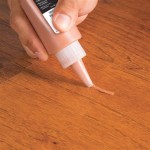Installing laminate flooring is an easy and cost-effective way to improve the look of your home. Laminate flooring is durable and can last for many years, making it an ideal choice for any homeowner. But before you start the installation process, you need to know the basics about laminate flooring and the necessary steps to take before you begin. Here is a complete guide for DIY laminate flooring installation.
What is Laminate Flooring?
Laminate flooring is a type of flooring composed of several layers of material bonded together with a lamination process. The top layer is a decorative layer that can be printed to look like wood, stone, or tile. The core of the laminate flooring is made up of fiberboard that is pressed together with high heat and pressure. The bottom layer is a backing layer that helps prevent moisture from entering the core.
Advantages of Laminate Flooring
Laminate flooring is a great choice for any homeowner because it has many advantages such as:
- It is durable and easy to care for
- It can be installed over most existing floors
- It is available in a variety of colors, styles, and textures
- It is cost-effective and easy to install
- It is resistant to scratches, fading, and stains
Preparing for Installation
Before you begin the installation process, there are some important steps you need to take to make sure your laminate flooring is installed properly. First, you need to measure the area you plan to install the flooring in. You should also make sure the subfloor is level and clean, and that any holes or cracks are filled in. You also need to make sure the room is at a comfortable temperature and humidity level. Finally, you should buy the right type of underlayment to go under the laminate flooring.
Installing the Laminate Flooring
Once you have prepared the area, you can begin installing the laminate flooring. Start by laying out the first row of planks along one wall. Make sure the planks are aligned correctly and the ends are even. You can use a jigsaw to cut the planks to fit around doorways and other obstructions. Then you can continue laying the planks until the entire area is covered. Make sure to leave a small gap between the planks and the walls to allow for expansion.
Finishing the Installation
Once all the planks have been installed, you need to secure them in place. You can use a hammer and nails or a nail gun to secure the planks. Then you can use a laminate flooring trim to cover the gaps between the planks and the walls. Finally, you can use a sealant to seal the edges and any seams between the planks.
Caring for Your Laminate Floor
Once the installation is complete, you need to take proper care of your laminate flooring. Make sure to sweep or vacuum the floor regularly to remove any dirt and debris. You can also use a damp mop to clean the floor. But make sure to use a cleaner specifically designed for laminate flooring and avoid using too much water. Finally, you should apply a laminate floor polish to protect the surface and make it shine.
Conclusion
Installing laminate flooring is an easy and cost-effective way to improve the look of your home. With the right preparation and the right tools, you can easily install laminate flooring yourself. Just remember to measure the area, prepare the subfloor, and buy the right type of underlayment. Then you can install the planks, secure them in place, and finish the installation with a trim and sealant. And don’t forget to care for your laminate floor properly to ensure it lasts for many years to come.















Related Posts








